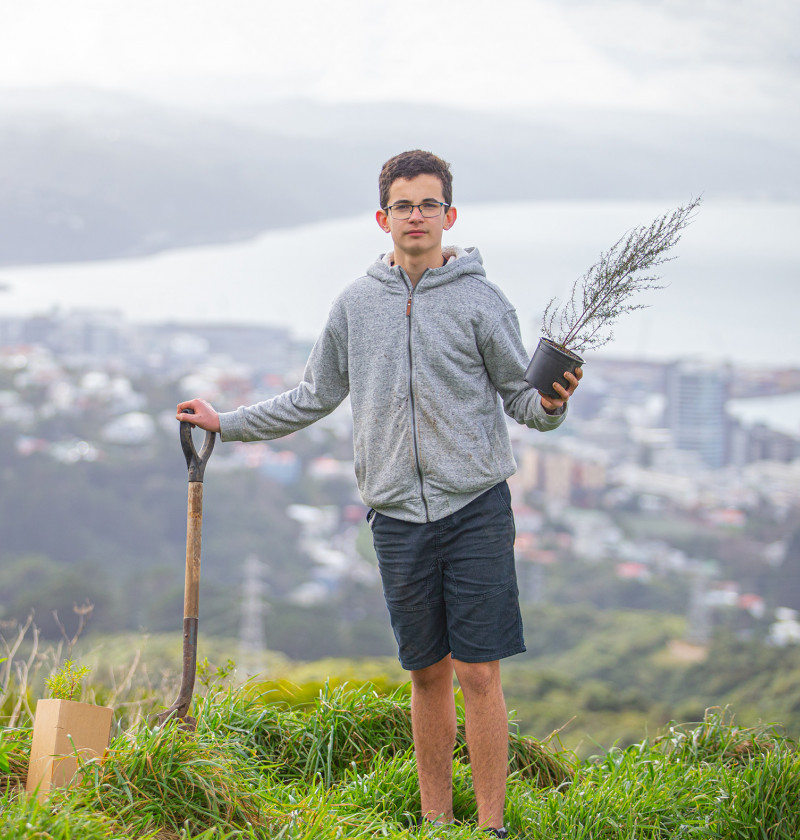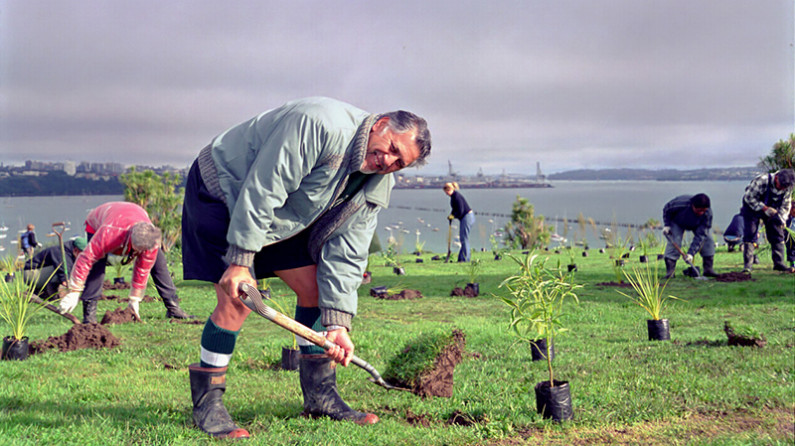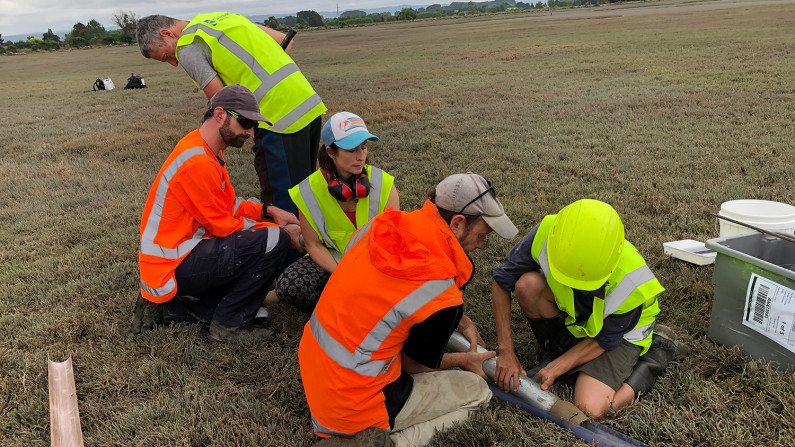Chapter 4 Working with nature

Download a PDF version of this chapter [PDF, 836 KB]
Our efforts to reduce the impacts of climate change are aligned with our biodiversity objectives. Our native ecosystems remove and store carbon, increase our resilience to climate change impacts and support thriving biodiversity and wellbeing.
The climate and biodiversity crises are inextricably linked. Aligning work on climate change and biodiversity is an opportunity to take strong action in both areas. This approach will ensure our response to the climate crisis also improves the resilience of our native ecosystems and does not further their destruction.
This emissions reduction plan is an opportunity to use nature-based solutions to tackle the climate emergency and to design our response to the climate crisis in a way that protects, enhances and restores nature where possible.
Through engagement with tangata whenua, the Government has heard the call for a kaupapa Māori approach to climate change. A kaupapa Māori approach requires a holistic view, in which our efforts to reduce emissions and promote climate resilience support wider outcomes for te taiao and people at the same time.
In Aotearoa New Zealand and around the world, biodiversity is rapidly declining and has reached a crisis point.
Te Mana o te Taiao – Aotearoa New Zealand Biodiversity Strategy 2020 [PDF, 2.8 MB] sets out the national vision for biodiversity for the next 30 years. The Biodiversity Strategy recognises that, for our native wildlife to thrive, we need to address the climate and biodiversity crises at the same time. Key outcomes and objectives of the strategy are that:
Te Mana o te Taiao – Aotearoa New Zealand Biodiversity Strategy 2020 [PDF, 2.8 MB] defines naturebased solutions as “solutions that are inspired and supported by nature, costeffective and simultaneously provide environmental, social and economic benefits and help build resilience.”*
* Internationally, the Fifth Session of the United Nations Environment Assembly formally adopted (in its UNEA-5 resolution) the definition of nature-based solutions as “actions to protect, conserve, restore, sustainably use and manage natural or modified terrestrial, freshwater, coastal and marine ecosystems, which address social, economic and environmental challenges effectively and adaptively, while simultaneously providing human well-being, ecosystem services and resilience and biodiversity benefits”. The UNEA recognises that nature-based solutions “respect social and environmental safeguards, including those for local communities and Indigenous Peoples”.
The website of the Fifth Session of the UNEA has more information
Nature-based solutions offer a practical approach for integrating climate and biodiversity policy for all sectors. They can remove carbon from the atmosphere, store it and build resilience to the impacts of climate change at the same time as supporting biodiversity and wider environmental outcomes. They can also create employment opportunities that support an equitable transition, especially in rural areas.
Examples of nature-based solutions that remove carbon and support biodiversity include:
Some nature-based solutions can also reduce emissions indirectly, for example:
Expertise from te ao Māori and mātauranga Māori will play a vital role in designing and providing nature-based solutions in the unique context of Aotearoa. The Government will need to work closely with tangata whenua in developing policies that help promote nature-based solutions.

Ngāti Whātua Ōrākei is an urban-based hapū, with rohe located on the central Auckland (Tāmaki Makaurau) isthmus. Ngāti Whātua Ōrākei acknowledge their obligation as kaitiaki to protect the health and mauri of te taiao and the natural world and to recognise and respect their deep connections between the environment and people. Ngāti Whātua Ōrākei takes a holistic approach to climate change. Their actions address climate change while also protecting biodiversity in urban spaces and improving wider environmental, social, cultural and economic outcomes.
Within 5 kilometres of the Tamaki Makaurau CBD, the hapū has 85 hectares of reserve land. This is a mix of open space, regenerating native bush, a native plants nursery and a māra kai (food gardens). The first restoration project in 1999, Whenua Rangatira native forest, was a beacon of inspiration for whānau. The nursery has created employment opportunities for whānau and the māra kai project is working towards circular waste systems and maintaining food sovereignty.
Collaborative rangahau (research) is a key part of Ngāti Whātua Ōrākei’s practice as they observe and learn from their taiao and whānau to better understand and respond to challenges and opportunities.
At Pourewa, Ngāti Whātua Ōrākei have partnered with the Auckland University of Technology Living Laboratories Programme to investigate how to effectively restore old-growth native forest on existing farmland. Around 9,500 trees on 2 hectares of land are intensively monitored to understand the wider ecosystem impacts of native forest restoration including impacts on carbon sequestration, biodiversity, soil health and water quality.
This work will help to fill the gap in data and research on the role of native habitats and mātauranga Māori-led habitat restoration that delivers carbon sequestration as well as cultural and biodiversity outcomes.
Since human arrival in Aotearoa, deforestation to make space for settlements, farms and other land uses has decreased native forest cover from around 80 per cent to 23 per cent. That deforestation has released an estimated 12 Gt CO2 into the atmosphere. Today, native forests cover around 7.8 million hectares and store approximately 1.8 Gt CO2.*
Looking after these forests is one of the most important contributions Aotearoa can make to combatting global climate change. We also have a significant opportunity to develop native forests that both act as long-term carbon sinks and support biodiversity, which aligns with the goals of the Biodiversity Strategy (see chapter 14: Forestry for initiatives to promote native forest carbon sinks).
* Farms, forests and fossil fuels: The next great landscape transformation [PDF, 2 MB]
Non-forest ecosystems, such as wetlands, peatlands and marine ecosystems, also provide an opportunity to remove and store carbon, alongside a range of wider benefits.
Wetlands are home to a diversity of native plant and animal species. They can improve water quality, provide flood and drought protection and are natural stores of carbon. They also hold cultural, spiritual, historic and economic value for Māori.* Peatlands and coastal wetlands that are drained to provide land for agriculture or housing become long-term sources of carbon dioxide emissions.** Estimates of current emissions from drained wetlands are around 1.9 Mt CO2-e per year.***
Wetlands are protected by the National Policy Statement for Freshwater Management 2020 (NPS-FM) and National Environmental Standards for Freshwater (NES-F), which seek to prevent further loss of natural inland wetlands. Proposed amendments to the NPS-FM and NES-F are designed to provide clearer direction on offsetting wetland losses and make it easier to restore and maintain wetland areas.
The contribution that blue carbon – the carbon stored in ecosystems such as mangroves, salt marshes and sea grass meadows – could make to climate change mitigation is also increasingly recognised. Managing and restoring marine ecosystems or creating new habitats could protect existing carbon stores and enhance natural carbon uptake. These actions can also help build resilience to climate change impacts such as sea-level rise, improve water quality, and protect the habitats of birds, fish and other species.
* Te Reo o Te Repo – The voice of the wetland: Connections, understandings and learnings for the restoration of our wetlands [PDF, 12.2 MB].
** Supporting Evidence for the Draft Advice for Consultation. Chapter 9: Removing carbon from our atmosphere [PDF, 614 KB]. Access the full draft report from the Draft Advice and Reports webpage [Climate Change Commission website].
*** This estimate is for drained organic soils only and does not include mineral wetlands. The figure has been derived from emissions estimates associated with the drainage of organic soils for conversion to pasture and crop and on forest land and settlements, presented in the Common Reporting Format tables of the New Zealand Greenhouse Gas Inventory.

Core and Restore is a community-based initiative with ambitious plans to measure, protect and restore coastal blue carbon habitats across Te Tauihu (the top of the South Island). The project is led by the Tasman Environmental Trust (TET) and co-designed and delivered in partnership with the Cawthron Institute, Beca, Ngāti Apa ki te Rā Tō, Nelson City Council and Onetahua Restoration.
By harnessing local expertise and enthusiasm, weaving in the unique knowledge and kaitiaki role of Māori, and collaborating with national and international experts, ‘Core and Restore’ is helping the community see coastal ecosystems in a new light.
Launched in November 2021, the project is currently in its pilot phase. The project team is trialling different methods to determine the most practical and costeffective ways to measure the region’s coastal blue carbon. This includes taking sediment core samples to measure how much carbon is stored in saltmarsh habitats in the Waimeha/Waimea Inlet and in seagrass habitats at Onetahua/Farewell Spit.
Alongside sediment coring and analysis, the team is also involving the community in a citizen science experiment to determine whether local seagrass, saltmarsh and mud habitats are sequestering or releasing carbon.
Following the pilot, TET plans to hold whole-community hui to build on what has been learned and co-design the next steps for expanding this mahi across Te Tauihu.
Further research at a local level is needed to understand the role that non-forest ecosystems can play in future climate change policy, such as their inclusion in the NZ ETS and emissions accounting. Research projects underway across Aotearoa to build an evidence base include:
The Government will investigate how blue carbon research results will be used to inform policy development and initiatives to protect and restore coastal ecosystems in Aotearoa. Tangata whenua are kaitiaki of marine and estuary environments. In developing further actions to protect and enhance blue carbon in these environments, the Government will work with its Te Tiriti partners.
A guiding principle of this plan is that climate policy, planning and regulation should protect, enhance and restore nature, and any impacts on nature should be mitigated as much as possible.
All of us – from government and Māori to primary producers and businesses, communities and non-governmental organisations – have a role to play in using nature-based solutions to address the climate emergency.
To address the climate and biodiversity crises together, the Government will:
The Government will establish an integrated work programme to address climate change and biodiversity loss together. This will address key barriers to native ecosystem restoration – such as the higher costs of investing in native ecosystems and the lack of Aotearoa-specific evidence on non-forest carbon sequestration – and create better incentives for restoring native ecosystems. It will also investigate how private and public money intended for offsetting hard-to-reduce emissions could support both climate and biodiversity outcomes.
The programme will focus on:
* Controlling deer, goats and other browsers on regenerating native vegetation could have significant carbon benefits (see Wild Animal Control for Emissions Management Research Synthesis [Department of Conservation website]). However, we need more accurate measurements to better calibrate incentives for managing forests for carbon sequestration.
To ensure the impacts of climate change initiatives on biodiversity are considered, the Government will:
Aotearoa encourages global efforts to use nature-based solutions through the United Nations and the Convention on Biological Diversity.
In 2021, Aotearoa signed the Glasgow Leaders’ Declaration on Forests and Land Use, which aims to halt and reverse forest loss and land degradation by 2030. We will ensure that our own forest and land use efforts live up to this commitment and continue international engagements to combat illegal logging around the world.
Wider work to drive climate, biodiversity and other environmental outcomes will complement actions to promote nature-based solutions and minimise impacts on biodiversity. This includes work on conservation, farm planning, resource management reform, urban development, climate change adaptation and shifting to a circular economy. Key initiatives that will support this emissions reduction plan are outlined in the following boxes.
Our conservation work helps our precious biodiversity, while supporting carbon removals and protecting our carbon stocks. Across government, this work includes:
Farmers and growers have a key role in delivering climate, freshwater and biodiversity outcomes on their land. Key programmes to help to ensure this happens include:
Promoting nature-based solutions and nature friendly climate policy is also relevant to our urban areas and how we manage our economy more broadly. Key work programmes that can encourage systems change across our regulatory and planning settings include:
Local government is uniquely placed to deliver nature-based solutions. Local councils are land and infrastructure owners, regulators and agencies responsible for implementing both climate and other environmental policy ‘on the ground’. This includes implementing the National Policy Statement for Freshwater Management 2020 and proposed National Policy Statement for Indigenous Biodiversity.
Councils can prioritise nature-based solutions in the provision of infrastructure and influence the restoration and protection of indigenous vegetation and wetlands. For example, Greater Wellington Regional Council has made "implementing nature-based solutions to climate change" a strategic priority in their long-term plan.
Through its Low Carbon Acceleration Fund, Greater Wellington is restoring native forests, peatlands and dunes on the Kāpiti Coast and in Kaitoke Regional Park to remove carbon from the atmosphere and realise wider social and environmental benefits.

Chapter 4 Working with nature
May 2022
© Ministry for the Environment